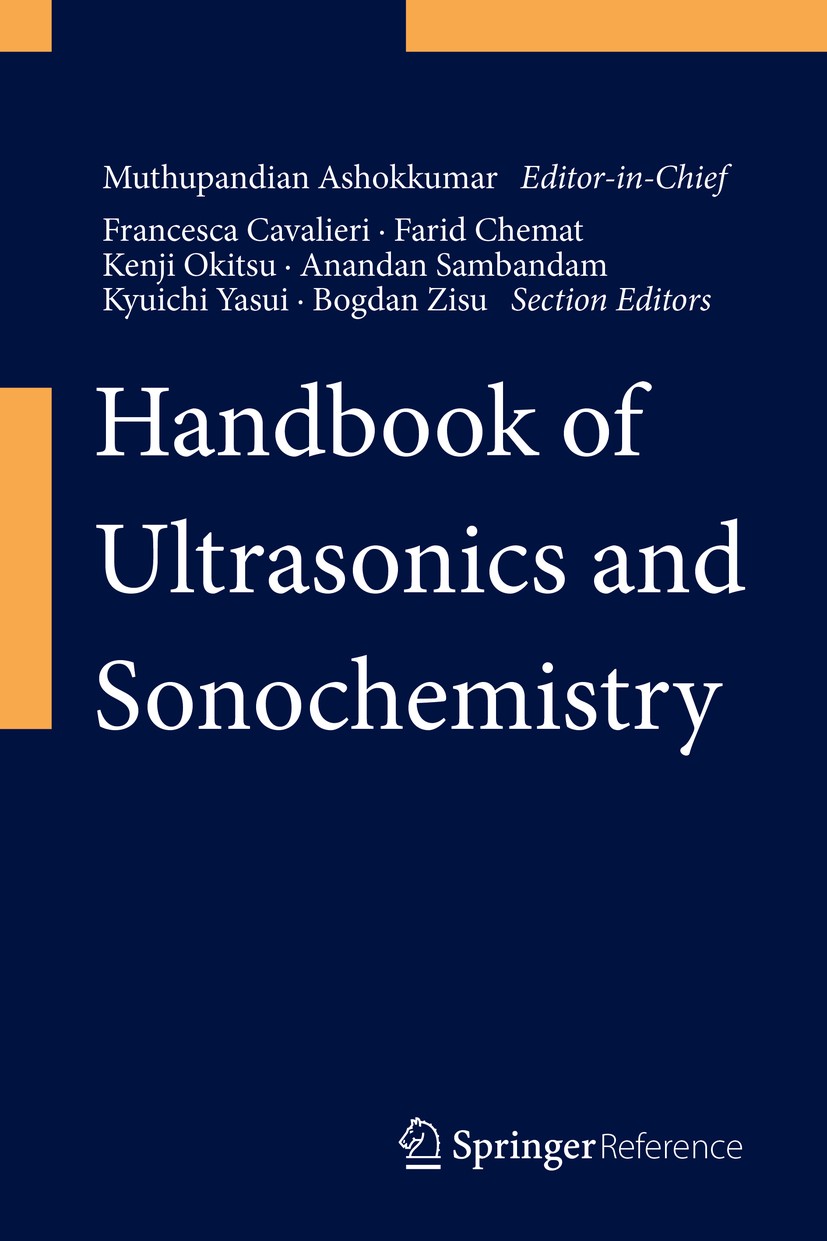| 书目名称 | Handbook of Ultrasonics and Sonochemistry |
| 编辑 | Muthupandian Ashokkumar (Editor-in-Chief) |
| 视频video | http://file.papertrans.cn/423/422333/422333.mp4 |
| 概述 | Delivers a comprehensive summary of all scientific accomplishments in ultrasonics and sonochemistry.Provides quick and reliable knowledge to students, academics and professionals from diverse scientif |
| 图书封面 |  |
| 描述 | The aim of this handbook is to summarize the recent development in the topic of ultrasonics and sonochemistry, especially in the areas of functional materials and processing applications. This handbook will benefit the readers as a full and quick technical reference with a high-level historic review of technology, detailed technical descriptions and the latest practical applications. This handbook is divided into five main sections: fundamentals of ultrasonics and sonochemistry, biomaterials, food processing, catalysts, wastewater remediation. Each section and chapter is written by reputable international scholars and industrial experts. The handbook comprehensively covers the fundamentals of sonochemistry along with key applications. The handbook strives to be a self-contained, easily-understandable reference that will also include up to date knowledge based on research articles. This handbook serves to provide a quick and reliable knowledge for new comers from chemistry, bioengineering, food processing, environmental engineering, in both academia and in industrial fields. |
| 出版日期 | Reference work 2016 |
| 关键词 | Acoustic Cavitation; Micro Bubble Dynamics; Sonochemical Reactions; Sonochemical Wastewater Remediation |
| 版次 | 1 |
| doi | https://doi.org/10.1007/978-981-287-278-4 |
| isbn_ebook | 978-981-287-278-4 |
| copyright | Springer Science+Business Media Singapore 2016 |
 |Archiver|手机版|小黑屋|
派博传思国际
( 京公网安备110108008328)
GMT+8, 2025-11-12 06:21
|Archiver|手机版|小黑屋|
派博传思国际
( 京公网安备110108008328)
GMT+8, 2025-11-12 06:21


